How to Sharpen a Pocket Knife With a Stone
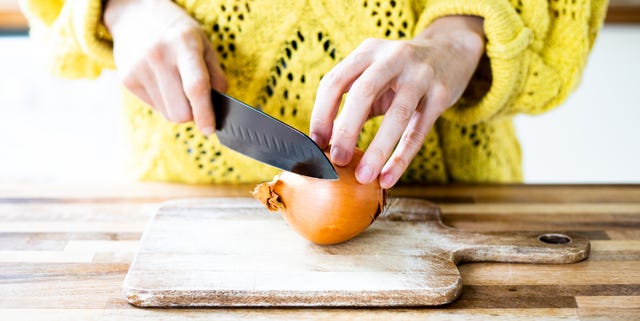
Photographer, Basak Gurbuz Derman Getty Images
Any cook will know the frustration of chopping with a blunt knife. Not only is it tricky to do, it makes it more likely you'll cut yourself too. Regardless of whether you've invested in a premium knife set or have a couple of favourites you've used for years, it's important to care for your knives so that they stay sharp.
We consulted experts at the GHI as well as Leiths School of Food and Wine to find out the best way to sharpen a kitchen knife.
How to sharpen a kitchen knife
1. Use a honing steel
Honing a knife on a steel helps maintain the edge of the knife; use a honing steel that is longer than your knife.
According to Ben Blackburn, Leiths School of Food and Wine teacher, if you've purchased a brand-new knife then you shouldn't need to be using a sharpening steel for a good few months, even if using the knife every day. The key is to use the honing steel at the start and end of every day you're in the kitchen. This will maintain the sharp edge to your knife. Using a sharpening steel (or a whetstone) too frequently can end up eroding the blade.
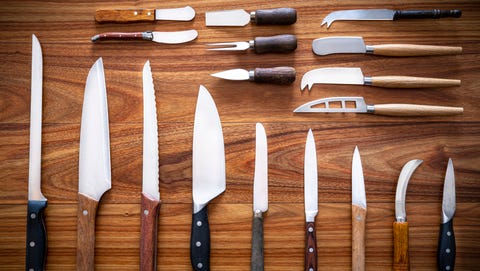
MEDITERRANEAN Getty Images
2. Sharpen at an angle
When sharpening a Western knife, hold the knife against the honing steel at roughly 22.5 degrees. Swipe the knife down and across the entire length of the steel. There is no need to apply force — allow the weight of the knife to do the job. Japanese knives require a more acute sharpening angle of 10-20 degrees.
Ben also says that whilst you'll see many top chefs sharpening their knives at great speed, if you try to do this it can be easier to miscalculate the angle at which you need the blade to be meeting the steel, thus resulting in a more blunt knife than when you started. He recommends holding the steel upright on a work surface, on a tea towel to ensure it doesn't slip, and drawing the knife at the required angle just 5 or 6 times on each side of the knife. Imagine the steel is at 12 o'clock and the knife is just a little before 1 o'clock.
The type of knife you should use comes down to personal preference, and how it feels in your hand. A Western knife is a European-made knife. The distinction is made between European (soft-tempered steel) and Japanese knives (hard tempered steel) as these tend to be the two most common types of knives. European knife blades are thicker and can withstand heavy-handed usage. Japanese knives are lighter, and their blades are thinner.
3. Clean the knife
When finished with honing, clean the knife and steel to remove any particles that may have come off.
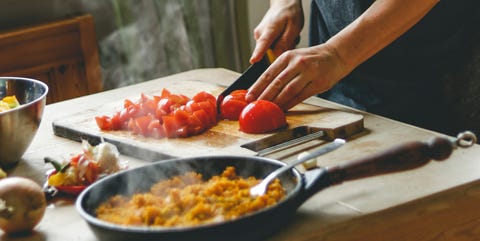
Kristina Vianello Getty Images
4. Know when to hone
How often you hone a knife depends on how much you're using the knife. Chefs in restaurants hone every few hours. A home cook might do it only once a day if they cook every day. Or once every few days if they cook less often.
5. When a honing steel no longer returns a knifes edge to sharpness, try using a whetstone or a sharpening steel which has a coating of either ceramic or diamond powder. Ben from Leiths School of Food and Wine says if your knife is a good quality and you hone the blade religiously after each time it's used then you should only need to use a whetstone once or twice a year. These can be bought online (with many videos showing you how to use one) but knife specialist shops will often sharpen them for you, guaranteeing a good blade.
5. Test with a tomato
To test the sharpness of your knife, try cutting a tomato. A dull knife will make crush the tomato whereas a sharp knife will cut right through with little or no effort.
General tips
* We recommend you don't put knives in the dishwasher, even if they are dishwasher safe. Wash by hand with hot soapy water and dry immediately. In a dishwasher knife blades can knock against the baskets or other crockery or cutlery and this can damage the blade. Plus, it's not safe for the person who is unloading the dishwasher, if they don't know there is a knife/ knives in there!
* Try not to put knives in a drawer. Other cutlery or knives in the same drawer can cause blade damage.
* Consider investing in individual protective sleeves or knife guards.
*If shopping for knife blocks, look for those with horizontal slats so that the knives do not rest on their edges.

Klaus Vedfelt Getty Images
Bright tea towels to add colour to your kitchen

Poketo Graphic-print linen tea towels set of two, £28
Selfridges
These graphic tea towels will add a pop of colour to any kitchen. Selfridges also do a range of matching cups and plates if you want to go full out.

John Lewis & Partners Monstera Houseplant Tea Towels, Pack of 2, £8
John Lewis
If you're not good at keeping houseplants alive then John Lewis' tea towels are for you.

Spotty Cat Tea Towel, £10
Not On The High Street
This charming cat-themed tea towel is guaranteed to put a smile on your face.
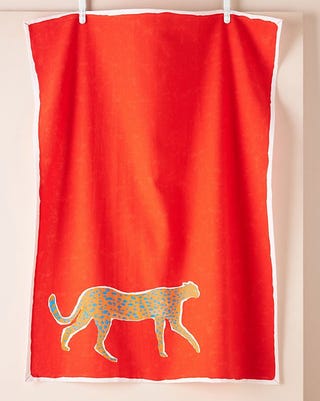
Sun Lee Prowling Leopard Tea Towel, £20
Anthropologie
Anthropologie's leopard tea towel is surely too good for drying dishes? Frame it instead.
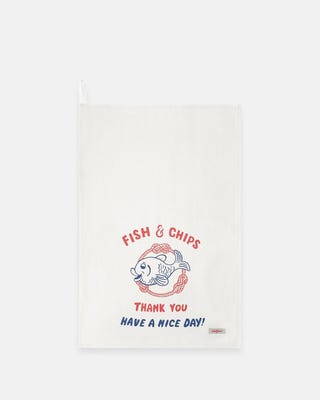
Fish and Chips Tea Towel, £15
Cath Kidston
With Cath Kidston's retro tea towel it's fish and chips for tea every night.
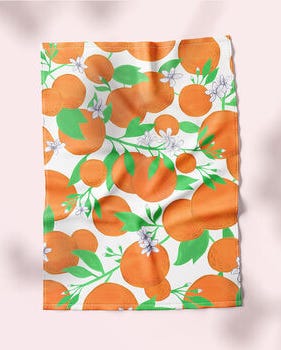
Cotton Oranges Tea Towel, £17
Not On The High Street
This orange themed tea towel with make you think of warmer climes every time you use it.

Pack of 3 Bertie Sausage Dog Tea Towels, £4
Dunelm
This set of tea towels featuring Bertie the Sausage Dog is great value as well as cute too.

Eagle Rock Stripe Tea Towels Set of 3, £24
Conran Shop
If you're looking for a smart, no-nonsense set of tea towels without illustrations then the Conran Shop has you covered.

Set of 5 Printed Tea Towels, £15
Marks and Spencer
A timeless set of tea towels from Marks and Spencer.
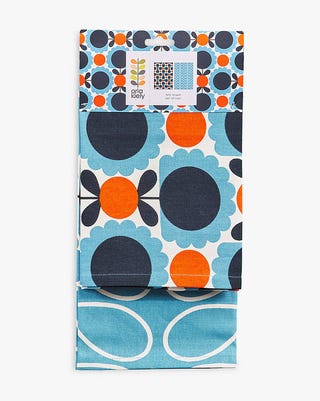
Orla Kiely Scallop Flower and Stem Tea Towels, Set of 2, £16
John Lewis
Orla Kiely's famous flower pattern makes these tea towels a smart gift.
This content is created and maintained by a third party, and imported onto this page to help users provide their email addresses. You may be able to find more information about this and similar content at piano.io
How to Sharpen a Pocket Knife With a Stone
Source: https://www.goodhousekeeping.com/uk/house-and-home/household-advice/a679892/how-to-sharpen-a-kitchen-knife/